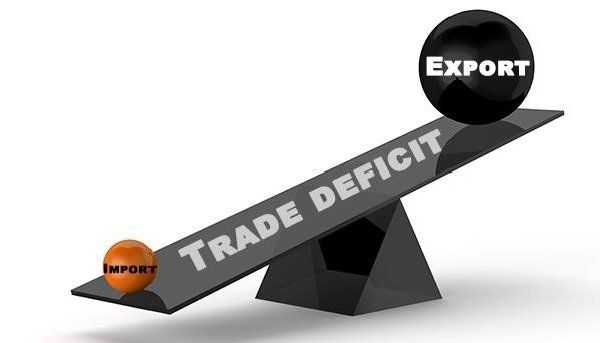Understanding business deficits and how to manage them
In the business world, a deficit occurs when a company’s expenses surpass its revenues during a specific period. This situation indicates that the business is spending more money than it is earning, resulting in a financial shortfall. Understanding deficits is crucial for effective financial management and long-term business sustainability.
For example, consider a small manufacturing company that produces kitchen appliances. If this company incurs costs of £500,000 in one fiscal quarter but only generates £400,000 in sales, it faces a deficit of £100,000. This shortfall could arise from various factors, such as increased material costs, lower-than-expected sales, or higher labour expenses.
Managing such deficits is essential for maintaining cash flow, meeting financial obligations, and planning for future growth. Without proper management, persistent deficits can lead to increased debt, reduced investor confidence, and potential insolvency.
What Is a deficit?
In financial terms, a deficit refers to a situation where expenses surpass revenues, imports are greater than exports, or liabilities outweigh assets. Essentially, a deficit represents a shortfall or loss, standing in contrast to a surplus.
Governments, businesses, and individuals can all experience deficits when spending exceeds income over a specific period, commonly a year. This imbalance indicates that more resources are used or consumed than are generated, which can impact financial stability and lead to the need for borrowing or other adjustments to cover the shortfall.

What are the different types of business deficits?
Deficits can manifest in various forms in business, each impacting a company’s financial health differently. Understanding these types helps businesses identify their financial challenges and develop appropriate strategies to address them.
Operational deficit
An operational deficit occurs when the daily operating expenses of a business exceed its revenues. This situation is often a result of high fixed costs, such as rent, salaries, and utilities, combined with lower-than-expected sales. For example, a retail store with substantial overhead costs might face an operational deficit during a slow sales period, especially if it also needs to invest in inventory and marketing to attract customers.
Budget deficit
A budget deficit happens when a company’s expenses surpass its budgeted projections. This type of deficit can arise from unexpected expenses or poor budgeting practices. For instance, a tech company might budget for product development but encounter additional costs due to unforeseen technical challenges or delays. Such a deficit can strain the company’s cash flow and require adjustments to the budget or sourcing additional funds.
Trade deficit
A trade deficit occurs when the cost of imports exceeds the revenue from exports for businesses involved in international trade. This situation can be particularly challenging for businesses that rely on imported raw materials or components, as fluctuations in currency exchange rates or international trade policies can significantly impact costs. For example, a car manufacturer importing parts might face a trade deficit if the local currency weakens, making imports more expensive compared to revenues from exports.
Types of government deficits
A government can encounter two main types of deficits: budget deficits and trade deficits, both of which affect a nation’s economy and financial stability.
Budget deficit
A budget deficit occurs when a government’s annual spending surpasses its revenue, typically collected from taxes. For instance, if a government collects $10 billion in revenue in a year but spends $12 billion, it results in a deficit of $2 billion. This budget shortfall adds to the cumulative national debt, representing the total amount the government owes over time due to past deficits.
Trade deficit
A trade deficit arises when the value of a country’s imports exceeds that of its exports. If a nation imports $3 billion in goods but only exports $2 billion, it incurs a trade deficit of $1 billion. This imbalance means more money is flowing out than in, which can lead to a depreciation of the country’s currency and may negatively impact domestic employment levels by shifting demand toward foreign goods.

What causes deficits in businesses?
Business deficits can arise from various factors, often influenced by internal management decisions and external economic conditions. Understanding these causes is crucial for diagnosing financial issues and implementing corrective measures.
Poor financial management
Ineffective financial management is a common cause of business deficits. This includes inadequate budgeting, poor cost control, and lack of financial oversight. For example, a business may fail to forecast expenses or revenue accurately, leading to unexpected shortfalls accurately. Additionally, poor cash flow management, where inflows and outflows are not well-coordinated, can exacerbate financial stress.
Economic downturns
External economic conditions, such as recessions or slowdowns, can significantly impact a business’s financial performance. During economic downturns, consumer spending often decreases, leading to lower sales and revenue. Businesses in industries sensitive to economic cycles, like luxury goods or construction, may experience sharper declines, resulting in deficits as fixed costs remain high while income drops.
Increased operational costs
Rising costs, whether due to inflation, increased wages, or higher prices for raw materials, can also cause deficits. For instance, if a manufacturing company faces a sudden increase in the cost of essential raw materials, its production costs may rise, eroding profit margins. Without corresponding increases in product prices or efficiency gains, these higher costs can lead to deficits.
Overexpansion or misallocation of resources
Businesses may also incur deficits by expanding too quickly without adequate planning or misallocating resources. For example, opening new locations without sufficient demand can strain a company’s finances. Similarly, investing heavily in new products or services without proper market research or development can result in significant losses if the ventures fail to generate expected returns.
Unexpected events
Unanticipated events, such as natural disasters, legal disputes, or sudden market shifts, can lead to unexpected expenses or revenue losses. These events are often beyond the control of the business and can create financial strain, notably if the company needs more insurance or contingency planning.
How do deficits impact businesses?
Business defects can have wide-ranging implications, affecting both short-term operations and long-term viability. Understanding these impacts is crucial for business owners and managers to navigate financial challenges and implement effective strategies.

Increased borrowing and debt
One of the immediate consequences of a deficit is the need for additional funding to cover the shortfall. Businesses may resort to borrowing, which increases their debt burden. Over time, this can lead to higher interest expenses, reducing the company’s net income and limiting its ability to reinvest in growth opportunities. Moreover, an increased debt load can strain a company’s cash flow, making it more vulnerable to financial shocks and less agile in responding to market changes.
Higher interest payments
As businesses accumulate more debt to finance their deficits, they face higher interest payments. These payments can consume a significant portion of the company’s revenue, diverting funds from other critical areas such as research and development, marketing, or employee training. This situation can stifle innovation and slow the company’s growth trajectory, making it difficult to compete in the market.
Liquidity issues
A persistent deficit can lead to liquidity problems, where the business needs help to meet its short-term obligations. This issue can arise when the company’s cash flow is insufficient to cover operating expenses, loan repayments, and other financial commitments. Liquidity issues can damage the company’s credit rating, making obtaining future financing more challenging and costly. In extreme cases, it may even lead to insolvency.
Reduced investment in growth
When a business is focused on managing deficits, it often has to cut back on growth investments. This could delay or cancel expansion plans, reduce marketing efforts, or forgo new product development. These cutbacks can limit the company’s ability to capitalise on market opportunities and hinder long-term growth prospects. Additionally, investors may become wary of a company that consistently reports deficits, leading to decreased stock price or valuation.
Impact on stakeholder confidence
Deficits can erode confidence among stakeholders, including investors, creditors, and employees. Investors may view persistent deficits as a sign of poor management or an unsustainable business model, leading them to withdraw their support or demand higher returns to compensate for the increased risk. Creditors may tighten lending terms or raise interest rates, making financing more expensive. Employees may also become concerned about job security, potentially decreasing morale and productivity.
Operational adjustments and cost-cutting
Businesses often need to make operational adjustments, such as cutting costs or restructuring operations, to manage deficits. While these measures can help reduce expenses, they can also have negative side effects, such as decreased product quality, reduced customer service, or layoffs. These actions can impact the company’s reputation and customer loyalty, exacerbating financial challenges.
How can businesses manage and reduce deficits?
Managing and reducing deficits is crucial for a business’s financial health and long-term sustainability. Here are several strategies that companies can implement to address deficits effectively:

Cost-cutting measures
Businesses facing deficits often need to start by identifying and eliminating unnecessary expenses. This process includes reviewing all expenditures to find areas where costs can be reduced without affecting the quality of products or services. For example, companies might renegotiate contracts with suppliers to obtain better rates, reduce discretionary spending, or streamline processes to eliminate inefficiencies. Additionally, optimizing operations through lean management techniques can significantly minimize waste and enhance overall productivity, contributing to cost reductions.
Enhancing revenue streams
To offset deficits, businesses can work on enhancing their revenue streams. Diversifying the range of products or services offered is one practical approach. By introducing new offerings or exploring new markets, businesses can increase their revenue base and reduce dependence on a single source of income. Strengthening sales and marketing efforts is also crucial. This might involve optimising pricing strategies, enhancing customer engagement, and leveraging digital marketing tools to reach a broader audience. These initiatives can help boost sales and improve the company’s financial position.
Financial restructuring
Financial restructuring is another strategy businesses can use to manage deficits. This may involve debt management tactics, such as consolidating debts to reduce interest payments or negotiating better terms with creditors. Sometimes, businesses may opt for equity financing, such as issuing shares or attracting new investors, to raise capital without increasing debt. These measures can provide a necessary cash infusion, helping businesses manage short-term deficits and invest in long-term growth.
Strategic planning and budgeting
Developing a robust financial plan is essential for addressing deficits. A comprehensive financial plan includes realistic financial goals, detailed budgeting, and cash flow projections. It also involves contingency planning to prepare for potential financial challenges. Regular monitoring of key financial metrics, such as profit margins, cash flow, and return on investment, is crucial. This allows businesses to identify issues early and take corrective actions as needed. Utilising financial dashboards and reports can help management make data-driven decisions to steer the company towards financial stability.
Improving operational efficiency
Investing in technology is a crucial strategy for improving operational efficiency and reducing costs. Businesses can adopt new technologies, such as automation and data analytics tools, to streamline processes and enhance decision-making. These investments can lead to significant cost savings and efficiency improvements. Focusing on employee training and development can also improve productivity and reduce errors. Well-trained employees are more likely to work efficiently, contributing to the company’s growth and profitability.
Enhancing customer relationships
Fostering strong relationships with customers is crucial for business sustainability. Focusing on customer retention through excellent service, loyalty programmes, and personalised marketing can lead to repeat business and referrals, which are critical for increasing revenue. Additionally, businesses should actively seek to expand their customer base through targeted marketing campaigns, partnerships, or exploring new distribution channels. By broadening their customer reach, companies can mitigate the risks associated with deficits and ensure a steady flow of income.
Why is proactive deficit management crucial for businesses?
Proactive deficit management is crucial for businesses as it ensures financial stability, promotes sustainable growth, and prepares them to handle economic fluctuations. By actively managing deficits, companies can maintain a healthy cash flow, avoid excessive debt, and allocate resources efficiently. This approach helps weather economic downturns and builds investor confidence, securing better access to capital and supporting long-term success. Proactive deficit management creates a solid foundation for a resilient and adaptable business model.
FAQs
What is the difference between a deficit and a loss?
A deficit occurs when a company’s expenses exceed its revenues over a specific period, leading to a shortfall in financial resources. On the other hand, a loss is a broader term that refers to the negative financial result when expenses are more significant than income. While a deficit can refer to the current economic period, a loss can refer to cumulative negative results over multiple periods.
Can a business recover from a deficit?
Yes, a business can recover from a deficit by implementing effective financial management strategies, such as reducing costs, increasing revenue, restructuring debt, and improving operational efficiency. Recovery depends on the severity of the deficit and the business’s ability to make necessary adjustments and secure additional funding if needed.
How do deficits affect a company’s credit rating?
Deficits can negatively impact a company’s credit rating by indicating poor financial health and management. A lower credit rating can result in higher borrowing costs and reduced access to financing, as lenders perceive the business as a higher risk. Companies need to manage deficits carefully to maintain a good credit rating.
Can a business operate with a deficit for an extended period?
While it is possible for a business to operate with a deficit for a short period, prolonged deficits can lead to financial instability, increased debt, and potential insolvency. Businesses must address deficits promptly and implement strategies to restore financial health.
What are the signs that a business might be heading towards a deficit?
Signs that a business might be heading towards a deficit include declining revenues, rising costs, poor cash flow management, increasing debt levels, and frequent overspending compared to the budget. Regular financial analysis and monitoring can help identify these warning signs early.
What are the long-term effects of not addressing a business deficit?
Not addressing a business deficit can have severe long-term effects, including increased debt, reduced investor confidence, poor credit ratings, and potential insolvency. It can also lead to reduced investment in growth opportunities, affecting the company’s competitive position and market share. Proactive management is crucial to avoid these adverse outcomes.


